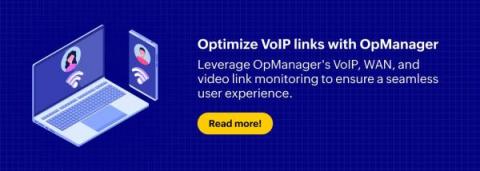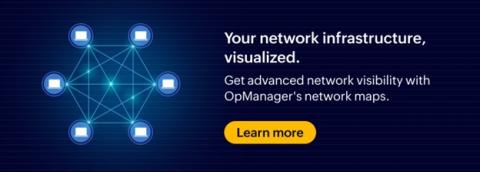Operations | Monitoring | ITSM | DevOps | Cloud
ManageEngine
SysAdmin Day 2023: Honoring the unsung heroes of technology
On this SysAdmin Appreciation Day, we pause to honor the remarkable individuals who work behind the scenes and whose efforts power every problem solved, every seamless connection, and every technological success. They are the sysadmins—the unsung heroes deserving our heartfelt gratitude. Today, we express our gratitude to the masters of multi-tasking, the conquerors of crashes, and the champions of security—the beloved sysadmins! Your unwavering commitment to excellence inspires us all.
Achieving cost-effective scalability: Optimize AWS ELB pricing using CloudSpend
ELB cost optimization- CloudSpend Amazon Elastic Load Balancing (ELB) is a load balancing service that automatically and evenly distributes incoming traffic from client-side applications across multiple virtual server instances, like Amazon EC2 instances, containers, or IP addresses, in different availability zones. It smoothly handles server instance failover and unavailability, thus increasing the application’s fault tolerance.
Enable real-time updates with new integrations of webhooks with NetFlow Analyzer
A webhook, or web callback, is a user-defined HTTP callback used to alter the behavior of a webpage or application. It is triggered by specific events in a web application, such as receiving an SMS message or phone call. When the webhook is triggered, the source application sends an HTTP request, usually in the form of a POST or GET request, to the URL configured for the webhook.
Maximizing VoIP performance: Why VoIP monitoring is vital for IT organizations
Voice over IP (VoIP) is a fairly old technology, brought into prominence during the 90s as an alternative to the hegemony of public switched telephone network (PSTN) telephony providers in the market. While VoIP was an alternative to normal telephone at that time, it soon led to a cascade of technological developments that changed the IT landscape. In a modern IT organization, VoIP-based technologies are indispensable.
Delta Community Credit Union gains full-stack visibility with Applications Manager
Hudbay Minerals gains data-driven visibility with Applications Manager
Virginia Department of Social Services transforms citizen services with Applications Manager!
Top tips: How to effectively manage your hybrid cloud
According to Cisco’s 2022 Global Hybrid Cloud Trends Report, 82% of IT leaders say that they have adopted a hybrid cloud. Cloud adoption has been a popular topic of conversation among many companies. Some wanted to make the huge leap from on-premises to cloud; some didn’t. Although the cloud has numerous benefits, it’s wise to keep critical resources limited to on-premises. Why, you might ask?











